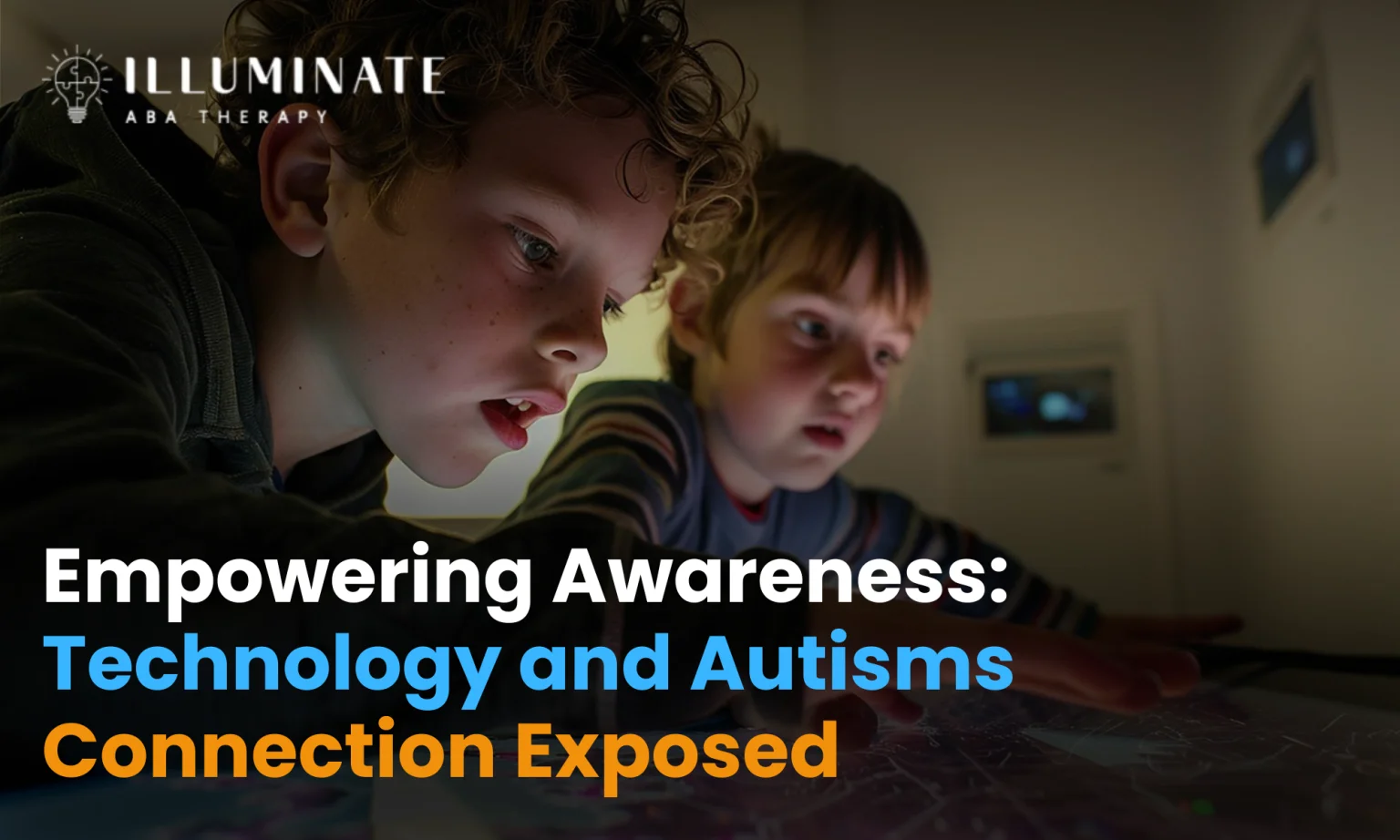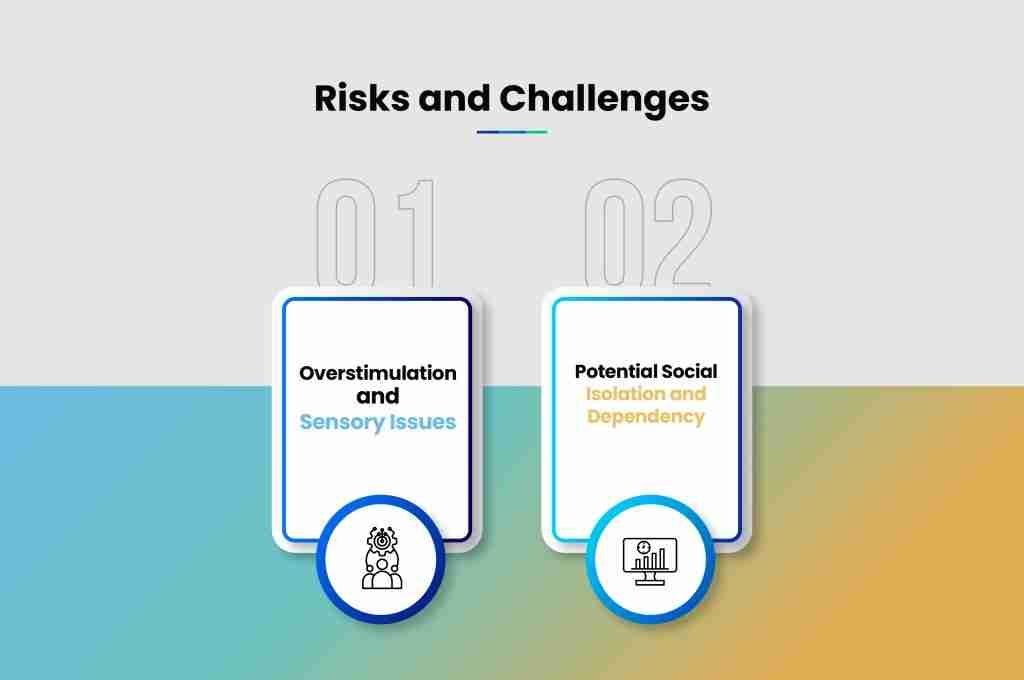Empowering Awareness: Technology and Autisms Connection Exposed
ABA TherapyJuly 17, 2025

Understanding Technology and Autism
In the realm of Autism Spectrum Disorder (ASD), the integration of technology has become increasingly prevalent, especially within Applied Behavior Analysis (ABA) therapy. This section aims to delve into the growing utilization of technology in ABA therapy and its impact on children with autism.
The Growing Use of Technology in ABA Therapy
Technology has revolutionized the landscape of ABA therapy, offering innovative tools and platforms that aid in skill development, behavior modification, and communication enhancement for individuals with autism. From interactive learning apps to virtual reality programs, technology has opened up new avenues for personalized and engaging therapy sessions.
The effectiveness of technology in ABA therapy is evident in its ability to provide immediate feedback, track progress in real-time, and tailor interventions to meet the specific needs of each individual. Incorporating technology into therapy sessions not only increases engagement but also empowers individuals with autism to learn and practice essential skills in a dynamic and interactive way.
Impact of Screen Time on Children with Autism
While technology can be a valuable asset in ABA therapy, the impact of excessive screen time on children with autism is a topic of concern. Prolonged exposure to screens, such as computers, tablets, and smartphones, may lead to issues related to overstimulation, sensory overload, and disruptions in sleep patterns.
It is essential for caregivers and therapists to strike a balance between utilizing technology as a therapeutic tool and monitoring screen time to prevent potential negative consequences. By implementing structured screen time limits and incorporating activities that promote sensory regulation and social interaction, the risks associated with excessive screen time can be mitigated.
In navigating the intersection of technology and autism, it is imperative to leverage the benefits of technology in ABA therapy while being mindful of the potential challenges posed by prolonged screen time. By adopting a strategic and balanced approach, individuals with autism can harness the power of technology to enhance their learning, communication, and overall quality of life within the framework of ABA therapy.
Benefits of Technology in ABA Therapy
Integrating technology into Applied Behavior Analysis (ABA) therapy programs has demonstrated notable benefits for individuals with autism. Two significant areas where technology plays a pivotal role in ABA therapy are communication and social skills development, as well as personalized learning and skill building.
Communication and Social Skills Development
Technology in ABA therapy provides innovative tools and platforms that can enhance communication and social skills development for individuals on the autism spectrum. Through interactive apps, virtual communication programs, and video modeling techniques, individuals can practice and improve their social interactions in a controlled and supportive environment.
Moreover, technology offers a visual and engaging way to teach crucial social cues, conversation skills, and emotional recognition. Video modeling, for instance, has been effective in helping individuals with autism learn and generalize social skills. To explore how video modeling can further enhance social skills in autism, refer to our article on using video modeling to enhance social skills in autism.
Personalized Learning and Skill Building
Technology enables ABA therapists to tailor interventions and learning experiences to the specific needs and preferences of individuals with autism. Personalized learning platforms and apps allow for adaptive skill-building activities that cater to the unique strengths and challenges of each individual.
Additionally, the interactive nature of technology-based learning promotes engagement and motivation, making skill acquisition more effective and enjoyable. Whether it's practicing communication skills, learning daily living tasks, or enhancing academic abilities, technology can be a powerful tool in the individualized progress of individuals with autism within ABA therapy programs.
To delve deeper into the impact of music therapy on children with autism within an ABA perspective, check out our article on the impact of music therapy on children with autism: an ABA perspective.
By harnessing the benefits of technology in ABA therapy, individuals with autism can access personalized learning experiences, improve their communication and social skills, and build essential skills in a supportive and engaging manner. It is essential to leverage the potential of technology while maintaining a balanced approach to ensure optimal outcomes within ABA therapy programs.
Risks and Challenges

When exploring the relationship between technology and autism, it is crucial to acknowledge the potential risks and challenges that may arise, particularly concerning overstimulation, sensory issues, social isolation, and dependency.
Overstimulation and Sensory Issues
Individuals with autism often experience sensory sensitivities that can be exacerbated by prolonged exposure to technology. Bright screens, repetitive sounds, and flashing images can lead to sensory overload, causing distress and discomfort. This overstimulation can impact their ability to focus, regulate emotions, and engage effectively in various activities.
Risk Factor
Impact
Overstimulation
Sensory overload, heightened anxiety, decreased attention span
Sensory Issues
Difficulty processing sensory information, discomfort, potential meltdowns
To mitigate the risk of overstimulation and sensory issues, it is important to monitor and limit screen time, use devices with adjustable settings to reduce sensory input, and provide sensory-friendly environments to create a more comfortable experience for individuals with autism.
Potential Social Isolation and Dependency
Another challenge associated with the use of technology in individuals with autism is the potential for social isolation and dependency. Excessive screen time may lead to a decreased interest in real-world social interactions, hindering the development of essential communication and social skills. Moreover, reliance on technology as a coping mechanism can result in reduced engagement in face-to-face interactions and activities.
Risk Factor
Impact
Social Isolation
Limited social interactions, challenges in forming relationships
Dependency
Reduced independence, reliance on technology for emotional regulation
To address these risks, it is vital to strike a balance between technology use and real-world social engagements. Encouraging social participation in structured activities, implementing social skill development programs that utilize technology judiciously, and fostering opportunities for in-person interactions are essential strategies to promote healthy social development and reduce dependency on technology.
By recognizing and proactively addressing these risks and challenges, individuals with autism can harness the benefits of technology while navigating potential pitfalls, ultimately promoting their holistic well-being and development.
Finding the Balance
Navigating the relationship between technology, screen time, and autism requires a delicate balance to ensure optimal outcomes for individuals undergoing ABA therapy. Incorporating technology into therapy can yield significant benefits, but it is crucial to implement strategies for healthy technology use and maintain a balanced ABA program.
Strategies for Healthy Technology Use
When integrating technology into ABA therapy for individuals with autism, it is important to establish guidelines and practices that promote healthy and purposeful screen time. Here are some essential strategies for ensuring positive technology utilization:
Strategy
Description
Limit Screen Time
Set specific time limits for technology use to prevent overexposure and prioritize other activities.
Use Educational Apps
Select interactive and educational apps that target specific skills, such as communication or cognitive development.
Supervise Device Usage
Monitor and guide the individual's interaction with technology to ensure safety and engagement.
Encourage Breaks
Incorporate frequent breaks during technology sessions to prevent fatigue and encourage physical activity.
Foster Social Interaction
Use technology to facilitate social interaction and communication skills through video calls or collaborative games.
By incorporating these strategies, individuals with autism can benefit from technology in a controlled and beneficial manner within the context of their ABA therapy.
Incorporating Technology in a Balanced ABA Program
Integrating technology into a balanced ABA program involves aligning the use of digital tools with traditional therapeutic approaches to create a comprehensive and effective intervention plan. When incorporating technology in ABA therapy for individuals with autism, it is essential to consider the following factors:
- Personalization: Tailor technology-based activities to the individual's specific needs and goals, ensuring that the interventions are customized to support their progress.
- Data Tracking: Utilize technology to collect data, monitor progress, and analyze outcomes, allowing for data-driven decision-making and adjustments to the therapy plan.
- Collaboration: Foster collaboration between ABA therapists, caregivers, and other professionals involved in the individual's care to ensure a cohesive and holistic approach to therapy.
- Integration: Integrate various forms of technology, such as video modeling or interactive games, to address different areas of skill development and create a dynamic learning environment.
- Regular Evaluation: Continuously assess the impact of technology on the individual's progress and well-being, adapting the use of digital tools based on ongoing evaluations and feedback.
By incorporating technology thoughtfully and strategically within a balanced ABA program, individuals with autism can benefit from innovative interventions while maintaining a holistic and personalized approach to therapy. For more insights on enhancing social skills in autism through video modeling, check out our article on using video modeling to enhance social skills in autism.
Success Stories and Case Studies
Numerous success stories and case studies highlight the positive impact of nutrition in conjunction with ABA therapy for children with autism. These real-life examples demonstrate the transformative effects of adopting tailored nutritional strategies in shaping the lives of individuals on the autism spectrum. From improvements in behavior and communication skills to enhanced cognitive function and overall well-being, the integration of nutrition into ABA programs has resulted in remarkable progress and success for many individuals.
For instance, a study conducted on the effects of a gluten-free and casein-free diet in children with autism revealed improvements in social behaviors, attention span, and language development when combined with ABA therapy. Such findings underscore the significance of personalized nutritional interventions in complementing behavioral interventions and optimizing outcomes for individuals with autism.
Through the collective evidence of success stories and case studies, it becomes evident that nutrition serves as a powerful ally in the realm of ABA therapy for autism, paving the way for holistic care and holistic improvement in the lives of individuals with ASD.
The amalgamation of effective nutritional support with targeted ABA interventions heralds a promising approach in enhancing the well-being and developmental trajectory of individuals with autism, underscoring the profound impact of comprehensive care that addresses both behavioral and nutritional needs.
